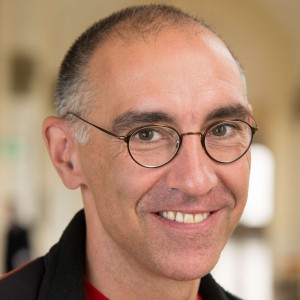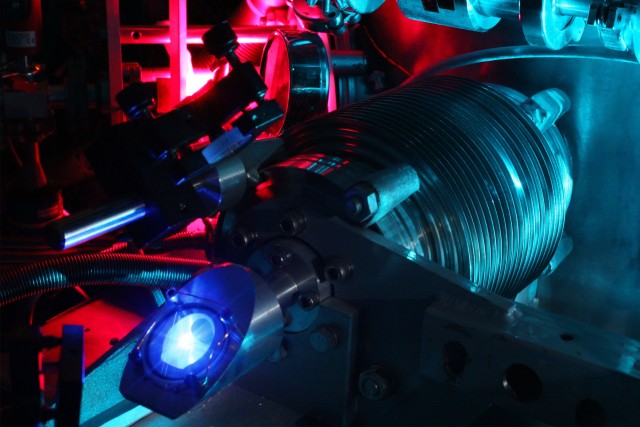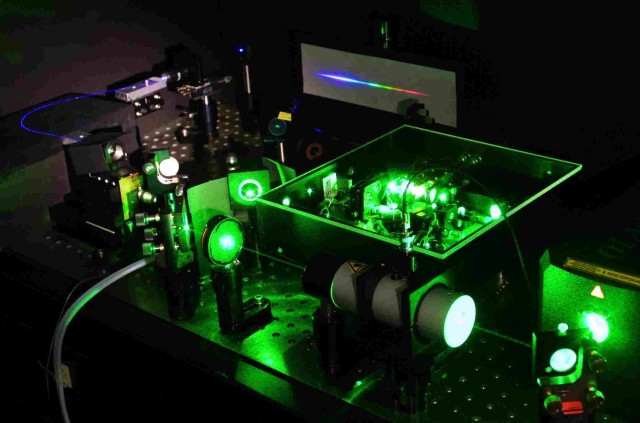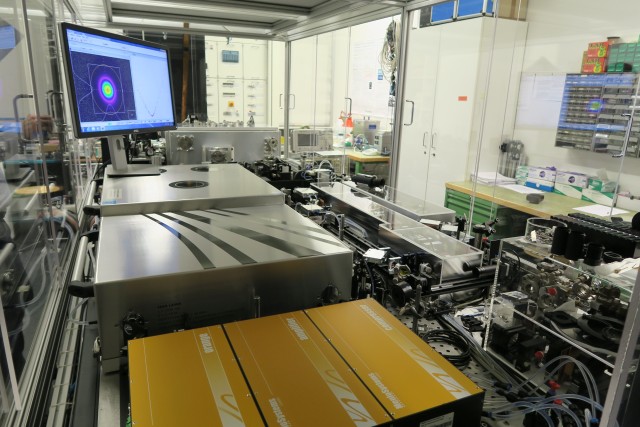
Improved active fiber-based retroreflector with intensity stabilization and a polarization monitor for the near UV (vol 29, pg 7024, 2021)
V. Wirthl, L. Maisenbacher, J. Weitenberg, A. Hertlein, A. Grinin, A. Matveev, R. Pohl, T. W. Hänsch, T. Udem
Optics Express 30 (5), 7340-7341 (2022).
In Sec. 6 (polarization monitor) of our recent publication [Opt. Express 29(5), 7024 (2021)], we assumed a small value of delta. This is however incorrect. The correct approximation for small beta leads to the updated Eqs. (10)-(11), resulting in a corrected Fig. 12. (C) 2022 Optica Publishing Group under the terms of the Optica Open Access Publishing Agreement

Improved active fiber-based retroreflector with intensity stabilization and a polarization monitor for the near UV
V. Wirthl, L. Maisenbacher, J. Weitenberg, A. Hertlein, A. Grinin, A. Matveev, R. Pohl, T. W. Hänsch, T. Udem
Optics Express 29 (5), 7024-7048 (2021).
We present an improved active fiber-based retroreflector (AFR) providing high-quality wavefront-retracing anti-parallel laser beams in the near UV. We use our improved AFR for first-order Doppler-shift suppression in precision spectroscopy of atomic hydrogen, but our setup can be adapted to other applications where wavefront-retracing beams with defined laser polarization are important. We demonstrate how weak aberrations produced by the fiber collimator may remain unobserved in the intensity of the collimated beam but limit the performance of the AFR. Our general results on characterizing these aberrations with a caustic measurement can be applied to any system where a collimated high-quality laser beam is required. Extending the collimator design process by wave optics propagation tools, we achieved a four-lens collimator for the wavelength range 380-486 nm with the beam quality factor of M-2 similar or equal to 1.02, limited only by the not exactly Gaussian beam profile from the single-mode fiber. Furthermore, we implemented precise fiber-collimator alignment and improved the collimation control by combining a precision motor with a piezo actuator. Moreover, we stabilized the intensity of the wavefront-retracing beams and added in-situ monitoring of polarization from polarimetry of the retroreflected light. (C) 2021 Optical Society of America under the terms of the OSA Open Access Publishing Agreement

Two-photon frequency comb spectroscopy of atomic hydrogen
A. Grinin, A. Matveev, D. C. Yost, L. Maisenbacher, V. Wirthl, R. Pohl, T. W. Hänsch, T. Udem
Science 370 (6520), 1061-+ (2020).
We have performed two-photon ultraviolet direct frequency comb spectroscopy on the 1S-3S transition in atomic hydrogen to illuminate the so-called proton radius puzzle and to demonstrate the potential of this method. The proton radius puzzle is a significant discrepancy between data obtained with muonic hydrogen and regular atomic hydrogen that could not be explained within the framework of quantum electrodynamics. By combining our result [f(1s-3s) = 2,922,743,278,665.79(72) kilohertz] with a previous measurement of the 1S-2S transition frequency, we obtained new values for the Rydberg constant [R-infinity = 10,973,731.568226(38) per meter] and the proton charge radius [r(p) = 0.8482(38) femtometers]. This result favors the muonic value over the world-average data as presented by the most recent published CODATA 2014 adjustment.



